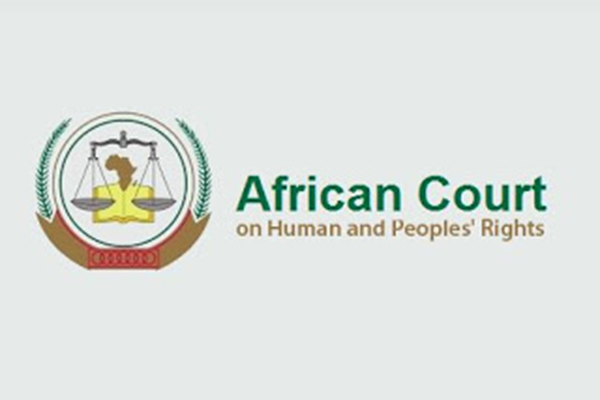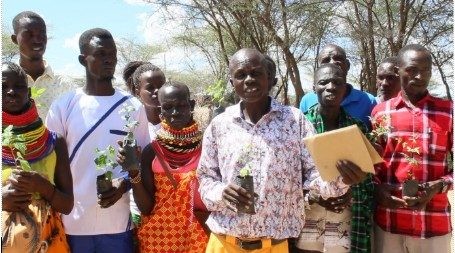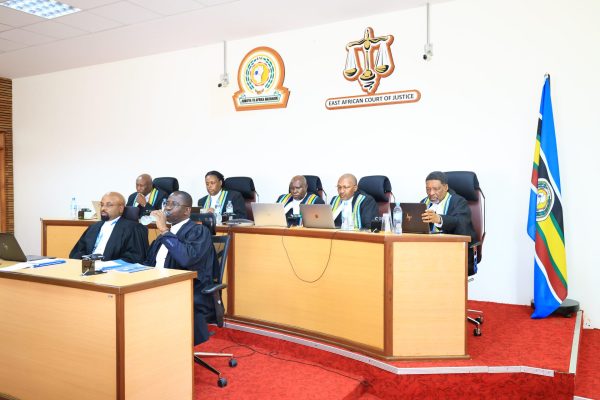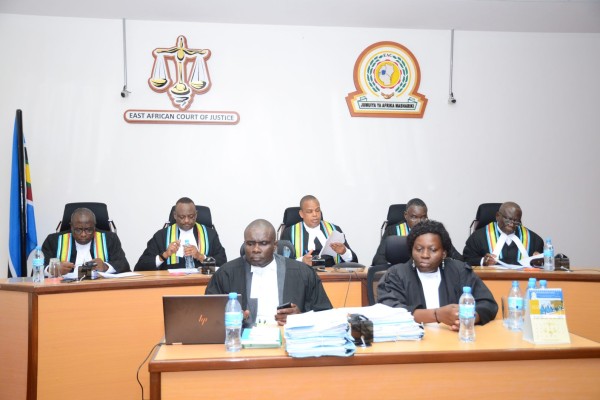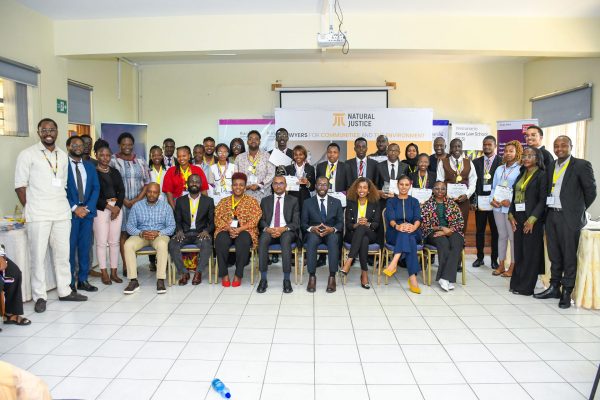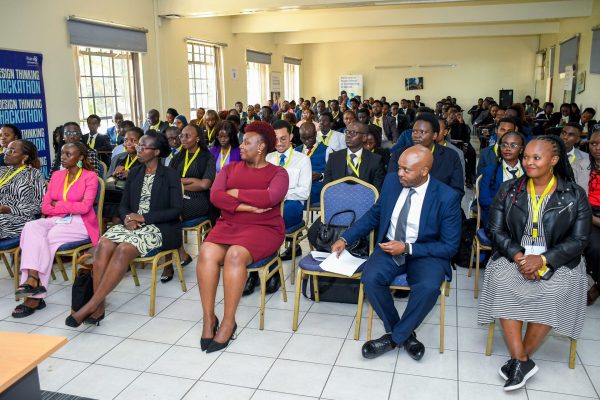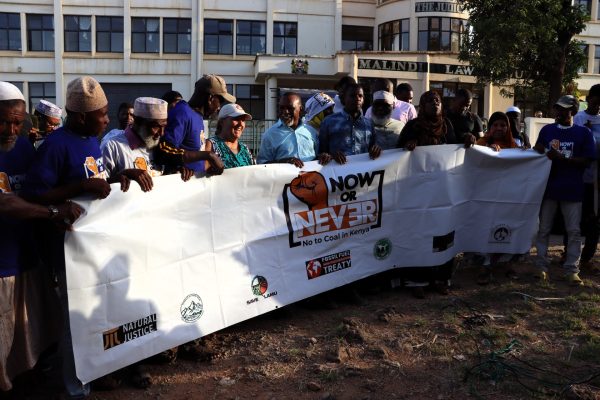“The forest is what we call land”
— James Sang, Ogiek community member
On 26th May 2017, the African Court on Human and Peoples Rights delivered a historic judgment in favour of the Ogiek, a forest dwelling community.1 This came after a eight year long legal battle and decades of routinely being subjected to forced eviction, without consultation and compensation, from their ancestral lands by the Government of Kenya (GoK). At the heart of forced eviction was the alleged need to preserve Kenya’s largest closed-canopy forest ecosystem and a water catchment area,2 spanning about 4000 hectares in five counties,3 and which has been under threat from illegal settlement and illegal extraction of natural resources.4
Following the GoK’s decision in 2009 to evict people living in the Mau forest complex in order to protect the water catchment zone, the Minority Rights Group (MRG), Ogiek Peoples Development Programme (OPDP) and Centre for Minority Rights Development (CEMIRIDE), also the original complainants, on behalf of 30,000 Ogiek members, filled a suit against the Government of Kenya (GoK) at the African Commission of Human and Peoples Rights (“the Commission”) citing the far reaching implications the order had on the political, social and economic well-being of the Ogiek community. Along with it, they requested the commission to issue measures requiring the GoK to halt any land transactions in the Mau Forest Complex and to refrain from any act that would irreparably prejudice the application pending determination. Subsequent repeated violation of these measures by the GoK led the Commission to transfer the case to the African Court on Human and People’s Rights in 2012 (the current application). The applicant further alleged violation of Article 1,2,4,8, 14, 17(2)(3), 22 and 23 of the Charter and prayed that the court order respondent to halt the eviction, recognize Ogieks historical land, and issue orders as to compensation for the loss suffered through the loss of property, natural resources and freedom to practice religion and culture.
Before addressing the substantive issues of the application, the court at the 28thOrdinary session issued an order of provisional measure on the ground that the respondent, through the Ministry of Land, issued a directive lifting the restriction imposed on all transactions for land measuring five acres or less within the Mau forest complex.5
Substantively, the court heard and dismissed objections raised by the GoK on its material and temporal jurisdiction to hear the application as well as the objection on admissibility of the application in as far as the Locus Standi of the of the original complainants, exhaustion of local legal remedies and the nature of the case is concerned. Further, the court addressed the alleged violations of rights provided for in the Charter. Most importantly, the violation of the right to life (Article 4), right to culture and the protection of traditional values (Article 17(2)(3), the right to practice religion (Article 8), the right to property (Article 14) and the right to development (Article 22). It also considered the question of remedy, which in whole included an order to halt the eviction of the Ogiek from East Mau complex, recognizing Ogiek’s historic land and order of payment of compensation.
In the end, the court determined that the Ogiek, having a clear historic attachment to the Mau Forest, are a distinct indigenous people. It also found that the Ogiek had property rights over the land they traditionally occupied and used, even though the colonial and Kenyan authorities had denied them a formal title. The court determined that the practice of religion was inextricably linked to land and any interference with access to land was an interference with this right. In this case, it noted that the Mau Forest is a spiritual home of the Ogiek and that the limitation imposed were unjustifiable. The court further considered the right to culture in a dual dimension: individual nature and the collective nature. It noted that this right was essential to the Ogiek’s identify and that the eviction for the preservation of the natural environment could not constitute a legitimate aim but was rather a measure that violated this right leaving the Ogiek community vulnerable and forcing them to assimilate. Finally, the court found that the GoK had not taken adequate legislative measures to implement the rights violated in the Charter. To this effect, the court ordered the GoK to take appropriate measures within a reasonable period to remedy all violations established. Finally, the court reserved its’ ruling on reparation and instead directed the issue to be dealt with in a different application by the applicant.
This judgment is a huge victory not only for the Ogiek community but also other Indigenous communities in general. Most importantly, by ruling that through a persistent denial of Ogiek land rights, their religious and associated cultural and hunter-gatherer practices were also violated, a strong message was sent to the GoK and other governments on the the need to respect the rights of the indigenous peoples and further, put measures for the realization of these rights. In this case, the court was generous enough to lay down the duty of the GoK to put measures for the implementation of the judgment. However, the implementation of the orders/ judgment cannot be analyzed without addressing the government’s attitude during this case and in other similar presided cases. In any event, the GoK has, time and again demonstrated a pattern of empty promises towards implementation of measures and orders made against them.
The Ogiek ought not to lose hope. They must push for the implementation of the court’s decision by lobbying the national government, maintaining a presence in Parliament and using other spaces to remind the GoK of its duty.
- ACPHR v GoK
- The Mau water catchment feeds into Lakes Victoria, Nakuru, Baringo, Turkana and Natron, and supports the ecosystems and livelihoods of millions of people.
- J Sang “Kenya: Ogiek in the Mau Forest” (2001) Forest Peoples Programme
- Mau Task Force 17-18. The forest is divided into seven blocs comprising South-West Mau (Tinet), East Mau, Ol’donyo Purro, Transmara, Maasai Mau, Western Mau and Southern Mau.
- Summary of fact 2 paragraph 5

